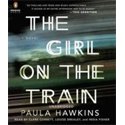 IN 140 CHARACTERS OR LESS:
IN 140 CHARACTERS OR LESS:
Your morning commute will never be the same after you read this gripping thriller.
Who it’s for:
Liked Gone Girl? There’s a good chance you’ll like this too
What the back cover says:
Rachel catches the same commuter train every morning. She knows it will wait at the same signal each time, overlooking a row of back gardens.
She’s even started to feel like she knows the people who live in one of the houses. ‘Jess and Jason,’ she calls them. Their life – as she sees it – is perfect. If only Rachel could be that happy.
And then she sees something shocking. It’s only a minute until the train moves on, but it’s enough.
Now everything’s changed. Now Rachel has a chance to become a part of the lives she’s only watched from afar.
What I say:
So, let’s deal with the elephant in the room; just how similar is The Girl on the Train, to the thriller hit of 2012, Gone Girl?
Let me put it this way. They both fall into a genre that I would describe as ‘chick-thriller’ – mysteries that focus more on relationship dynamics than the actual forensics of the crime.
That’s about where the similarities end, unless of course you include the fact that both share the word ‘girl’ in their titles.
In about every other major regard – plot, setting, characters and structure – these books are different.
Confession. About half-way through The Girl on the Train, I read ahead and read the ending. Yes, I did.
My mum always said that reading the ending of a book is a sign of a weak character. I disagree; I call it a sign of a great plot.
There was a point in this book where I could feel myself speed-reading, anxious to know how everything would be resolved.
But I didn’t want to rush it. I wanted to notice the details. Notice the construction. See if I could pick up on the clues. So, I read the ending, and went back and started reading more slowly. No harm done.
Hawkins has a no-frills method of writing, which won’t appeal to literary readers, but how many literary readers enjoy thrillers? The style suits the audience.
The story is narrated by three characters, all female, in a first-person, present tense – almost a stream of consiousness style.
In other words, the reader is taken right inside the character’s head. There’s a sense of immediacy and intimacy. We see the characters with all their flaws. Some would call them ‘unlikeable’ and ‘unreliable’. I would call them ‘human.’
In an interview with Book Page, Paula Hawkins says the idea for The Girl on the Train stemmed from her own experiences as a London commuter.
“I loved looking into people’s houses. The train went really close by apartments, so you could see in. I never saw anything shocking, but I wondered, if you saw anything out of the ordinary, an act of violence, who would you tell and would anyone believe you? I had a germ of it in my brain for ages. The voyeuristic aspects of commuting, everyone has. Even if you commute by car, you look into other cars.”
And this is the genius of the book. It’s actually a perfect commuter read. Engaging but not too challenging – ideal for the girl (or boy) on the train.
Read a free sample from Random House, or buy it from Booktopia or Amazon

1 Comment
Natasha Lester
I’ve been wondering whether this book was worth the fuss or not. Great review – I’ll probably add it to the towering to-read pile now!
Comments are closed.